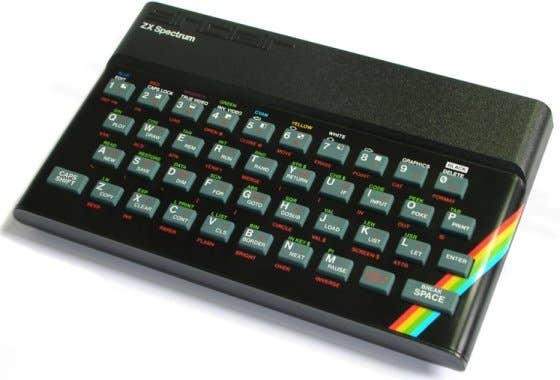Amazing Chiptunes You've Never Heard: Crazy Comets
Unless you grew up in Britain in the 80s, you're probably unaware of this funky piece of C64 music.
This article first appeared on USgamer, a partner publication of VG247. Some content, such as this article, has been migrated to VG247 for posterity after USgamer's closure - but it has not been edited or further vetted by the VG247 team.
Over in the UK in the mid-80s, the video game scene was experiencing explosive growth thanks to the meteoric rise in popularity of the Sinclair ZX Spectrum and Commodore 64 microcomputers. Unlike here, the British video game market didn't crash in 1983. Due to their relatively high pound sterling cost, second-generation consoles simply hadn't sold as well in the UK during the late 70s and very early 80s as they had in the US, so the market never became over-saturated with games and systems.

Instead, the nascent games market was driven more by early home computers like the Commodore PET, Commodore VIC-20, and the Sinclair ZX81. It was very much a niche hobbyist scene, and it grew slowly during the first few years of the decade. However, things began to pick up when the impressive next-generation microcomputers – namely the aforementioned Commodore 64 and Sinclair ZX Spectrum – were released in 1982.
Sales of both machines were initially quite modest, but built momentum through 1983 and 1984 as both systems dropped in price and became more affordable. By the time 1985 rolled around, the market was booming. The ZX Spectrum was the dominant machine in terms of sales, but the technically superior, but more expensive Commodore 64 wasn't that far behind.
As the market expanded, so did games development. British software producers sprang up all over the country, from highly talented youngsters coding in their bedrooms to multinational companies with swanky offices. Rather interestingly – and this is very much my anecdotal observations from working in the press during this period – I think that British software development was incredibly competitive. Many UK games programmers had a hacking mentality, and wanted to extract the absolute most out of their target platforms in terms of graphics, sound, and gameplay.

I think this is especially true of Commodore 64 games. While ZX Spectrum software certainly evolved impressively during the mid-80s, the more powerful Commodore 64 seemed to have an even higher ceiling for technical trickery. Developers used clever programming hacks to enable the system to display more sprites on screen than it was supposed to, and budding pixel artists pushed the machine's quite basic VIC-II graphics chip to its limits, creating increasingly sophisticated visuals. But for me, one of the most exciting areas of the Commodore 64's development was facilitated by its Mos Technology 6581 chip – aka SID, the sound interface device.
One of the early pioneers that really began to realize the potential of this 8-bit programmable sound generator was Rob Hubbard. In 1985, the then-unknown programmer approached Sheffield-based Gremlin Graphics with a demo of an educational program he'd written that was designed to teach users how to read music. While the software company wasn't particularly interested in what he'd created, they were very impressed with the tunes that he'd written for his program. So much so that they signed him up to produce the theme music for their upcoming title, Thing on a Spring.
The game was good, but its music became an overnight sensation within the Commodore 64 community. I remember hearing it for the first time and being absolutely blown away. There'd been some good Commodore 64 music beforehand – M.U.L.E. had a particularly catchy tune, and I loved the title music to Boulderdash – but Thing on a Spring was in a class of its own. Indeed, when I reviewed the game, I said, "The sound is unbelievable… words fail."
It didn't take long before Rob became very sought after, with companies lining up requesting that he make music for their games. A Commodore 64 star was born, and between 1985 and 1988 Rob produced a string of amazing themes and tunes that I'll talk a little more about in subsequent entries in this series.
Today I thought I'd focus on the exceptionally funky number that he wrote for Martech's Crazy Comets in late 1985. The game was basically an unofficial port of the Mad Planets coin-op – a twist on the Asteroids theme involving the player shooting down planetoids that bounced around the screen. While it's not exactly the most memorable of C64 releases, I think its main theme is outstanding – it's essentially a five-minute tour of the flexibility of the Commodore 64's SID chip. A driving bassline underpins the song, which features a variety of guitar and drums, and some nicely-dissonant effects. Considering all this is coming from a three-channel, 8-bit chip designed in 1981, I think it's pretty remarkable.
I hope you enjoy listening to it!

